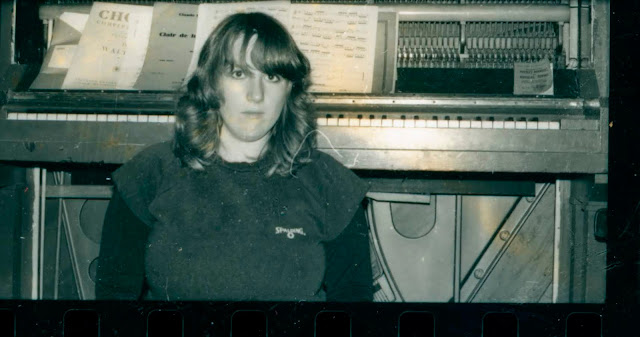I recently read a fascinating article, “Why Do Selfies Matter? Ask Frederick Douglass,” and watched its accompanying video, “Frederick Douglass: Inventor of the Selfie,” both which you can access here: Frederick Douglass: Inventor of the Selfie .
The writer and video-maker posits that Frederick Douglass, the most photographed man of the 19th century, used photographs much like we use selfies today. Even though he didn’t actually take the photos of himself, he managed them — how he dressed, his facial expressions, the background — to not only influence how people thought of him, but to change the racist mindset of the American people towards black men in general.
At the same time as I was considering how Frederick Douglass used the new medium of photography to create himself and his image, I was involved in a two-month-long project of scanning all of my family photographs at the Irondequoit Library. Towards the end of that project, I came across a series of contact sheets from photography courses I took in 1985-1986 at Clark University in Worcester, MA (my alma mater).
I remembered only a few of those photos, and so it was a thrill to see the whole of them, especially those of forgotten, and now mostly-demolished, places in and around Worcester, the old Worcester State Hospital (insane hospital with its Victorian Kirkbride buildings) and the famous (or infamous) Spags Department Store (“Spags no Bags”).
But the images that really captured my attention were the ones of, well, me! One of the assignments in the class was to take a self-portrait. This was a most difficult assignment for me because I had been, for most of my childhood and all of my adulthood, filled with self-shame about my appearance. I tried to avoid being in pictures, and was embarrassed of the ones in which I was captured.
And this self-shame is evident in the photos I took during that course in 1985-1986, and how I strove to complete the assignment while not actually showing my face.
Attending to the nature of the self-portrait assignment, which should communicate something to the viewer about the person photographed, I incorporated personal themes,
in this case, my piano — very important to me as a child, when I took lessons and played my piano all day, most days, but always alone in the living room, never in performance.
When people would visit our house, I always stopped playing as soon as I heard them enter, and then would begin again when they had finally left. I was, in fact, quite good, but was, also, quite shy.
I also incorporated the theme of family legacy, genealogy, and my own knowledge that who I was was someone who descended from others, and that I carried my descendants with me, wherever I went, whatever I did.
But who I really was, the “me” that was setting up these photos, well, I was hiding, wasn’t I.
Sometimes, these photos were quite sad, especially the one where I am sticking out my tongue at my child-self. I was 27 years old at this time, with self-esteem issues which would keep me tangled up until in my 50s, when I at last shed them.
Here’s the one I eventually showed at my final critique. My photography teacher didn’t like it, and I don’t blame him.
If I had it to do over again, I would show the following three self-portraits, in which I have the courage to look directly into the camera, to be seen, if only, at that time, by myself, and only in the one-inch image in the contact sheet, since I never chose to develop and print these photos into 8x10s.
These were my earliest selfies. And they tell me much, as all selfies do.
And I salute that 27-year-old young woman. I became me because of her. And I thank her for saving the documentation which proved her existence, and for allowing me to see it, again, after all these years.










